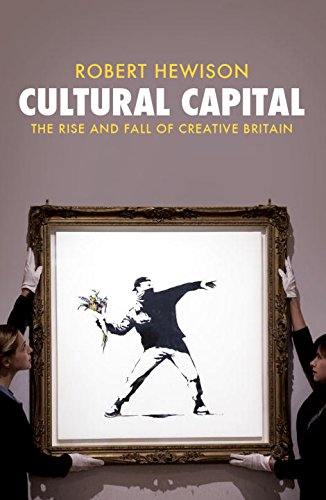 |
| Picture: Amazon |
Robert Hewison Cultural Capital: The rise and fall of creative Britain Verso 2014 £14.99
This narrative history of British cultural policy from 1997 to 2012 ruthlessly skewers the comic ineptitude of successive government attempts to corral the arts sector towards instrumental ends. The purveyors of managerial efficiency squandered money on white elephant projects and hamstrung arts professionals with meaningless targets and constant monitoring. The managers couldn't manage. Even widely-lauded policies had unintended consequences; free admission was intended to increase access, but visits by lower socio-economic groups actually fell. This book is a compelling and damning account of years of ineptitude, but the critique is one-sided. Hewison focuses on government policy, but he neglects the role of the cultural sector itself in the trends he describes. He is too ready to attribute all ills to 'neoliberal' ideology, which cannot bear the weight of his argument.
Neoliberalism is usually understood as a doctrine seeking extension of the free market - free trade, less government intervention, using markets to set prices and allocate resources. Hewison describes the opposite: removing the market mechanism with free museum entry and increased bureaucratic management by central government. Neoliberals would heartily endorse much of Hewison's criticism of government policy. Hewison doesn't explain the links to neoliberal thinkers; the term is derogatory rather than analytic. It's used in the same way that less thoughtful conservatives call anything egalitarian or liberal 'socialist', as if it's all on a continuum with show trials and gulags. Criticising neoliberalism is more like picking a team than analysing a problem.
I think the reason Hewison doesn't probe too deeply is that he doesn't want to address the complicity of the cultural sector itself in the trends he describes. Far from an alien imposition, the instrumental pursuit of goals like social inclusion and economic growth were being ardently promoted from within the cultural sector well before the Blair government adopted them. Radical museologists and critical theorists and multiculturalists have become increasingly influential. And the cultural sector's clamour for money has long been supported by claims that it's a good investment. The cultural sector didn't reluctantly sell out in return for increased funding; they were actively marketing themselves to policymakers by asserting that they could meet targets and deliver government objectives.
It's sometimes hard to discern whether Hewison is criticising a policy's effectiveness or its objective. He discusses generally some of the dilemmas of multiculturalism and diversity, but seems mainly critical of the ineffectiveness of the policies pursued rather than their aim. He is downright patronising when he writes that, "Unsurprisingly, minorities are interested in art that reflects their own experience" (p. 82). Can you imagine turning that around and saying "white middle class people are interested in art that reflects their own experience"? High culture gets to be high culture because it speaks to universal experience.
Despite his fondness for writing about neoliberalism, the discussion of economics is the weakest part of the book. He repeats the old saw that art is ideal for money laundering, but he thinks it's because, except for old masters, it's easily moved and can be traded in any currency. How many commodities does that not apply to? Surely unique works of art are especially traceable. There are reasons why the art market might be targeted for money laundering, but that's not it.
Then he says there's an "imbalance between an excessive accumulation of surplus capital and a lack of consumption to sustain growth. The solution was to stimulate production by offering 'fictitious capital' in the form of credit - hence the development of the sub-prime mortgage market in America that engendered the global crisis [...] although it is logical to borrow to invest, there is a strong temptation not to invest in production, but in assets such as stocks and bonds, futures, derivatives and property, where value is generated by competitive demand and governed by sentiment. Profits come out of thin air" (p, 157-8). Wowsers. I'm not even sure what that means, but I take comfort from confidence that Hewison doesn't know either. Companies issue bonds and shares to raise money to invest in production. But somehow bonds and shares are not investment in production.
He thinks art is emblematic because it has 'almost no' material value and is worth what people might pay for it in the future. A financial asset is worth the present value of future cashflows. But actually that's not true of art. If it's really about future value then the art market is just a ponzi scheme, everyone buying on the basis of what the next person will pay, on the basis of their assumption of what the next person will pay. Obviously the expectation of future value is a consideration when buying art, but it is a consumption good before it's an investment good.
This book tells people what they want to hear. Neoliberalism is the big ideological villain. Government should shower the cultural sector with money, but otherwise leave it alone. Hewison's account of government policy is important and damning, but it's only half the story. There are other ideas that are more subtle than neoliberalism, but more concretely damaging to culture.
No comments:
Post a Comment